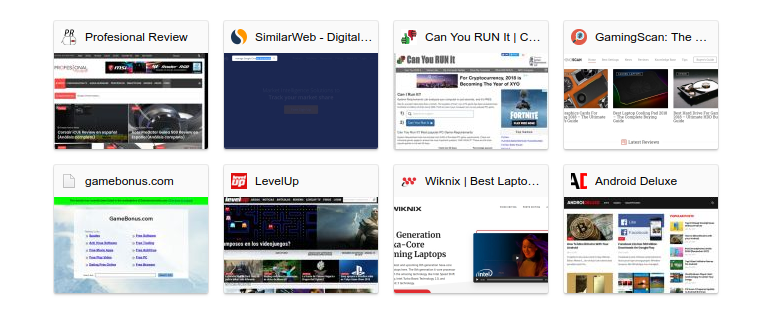
 Highlights: This shows your recent Web activity. To learn more, see Pocket sponsored stories on new tabs and Firefox New Tab FAQ (Pocket site). Sponsored Stories: Select this check box to see the occasional Pocket sponsored story.
Highlights: This shows your recent Web activity. To learn more, see Pocket sponsored stories on new tabs and Firefox New Tab FAQ (Pocket site). Sponsored Stories: Select this check box to see the occasional Pocket sponsored story. 
and Germany only) This shows you stories that are popular among Pocket users.
Recommended by Pocket: (U.S., Canada, U.K. To learn more, see Sponsored tiles on the New Tab page. Sponsored Top Sites: Select this check box to see the occasional sponsored site. Top Sites: This shows your most visited sites. Web Search: This turns the Search the Web box on or off on the New Tab page. Some sections have a drop-down panel to choose the number of rows you want to view. Under Firefox Home Content, put a checkmark next to the sections you want to see on your New Tab page. Click the menu button and select Settings. Click the menu button and select Options Preferences. We’re supportive of Adobe’s announcement today, and we look forward to working with everyone to make the web even better.In the Menu bar at the top of the screen, click Firefox and select Preferences. It’s taken a lot of close work with Adobe, other browsers, and major publishers to make sure the web is ready to be Flash-free. If the site continues to use Flash, and you give the site permission to run Flash, it will work through the end of 2020. If the site migrates to open web standards, you shouldn’t notice much difference except that you'll no longer see prompts to run Flash on that site. If you regularly visit a site that uses Flash today, you may be wondering how this affects you. 
We will remove Flash completely from Chrome toward the end of 2020. Chrome will continue phasing out Flash over the next few years, first by asking for your permission to run Flash in more situations, and eventually disabling it by default. These open web technologies became the default experience for Chrome late last year when sites started needing to ask your permission to run Flash. They also work on both mobile and desktop, so you can visit your favorite site anywhere. They’re also more secure, so you can be safer while shopping, banking, or reading sensitive documents. This trend reveals that sites are migrating to open web technologies, which are faster and more power-efficient than Flash.

Today usage is only 17 percent and continues to decline. Three years ago, 80 percent of desktop Chrome users visited a site with Flash each day. But over the last few years, Flash has become less common. Today, Adobe announced its plans to stop supporting Flash at the end of 2020.įor 20 years, Flash has helped shape the way that you play games, watch videos and run applications on the web.








 0 kommentar(er)
0 kommentar(er)
